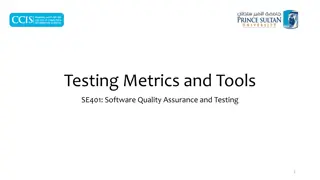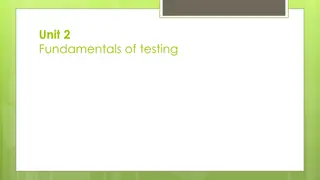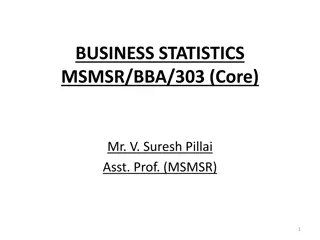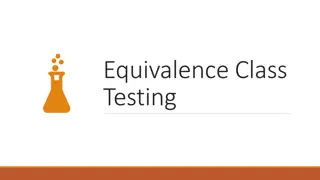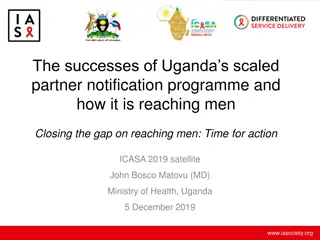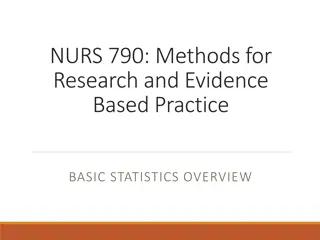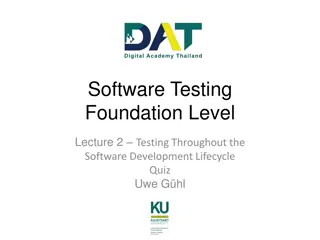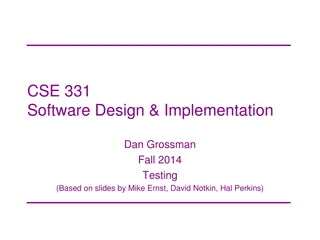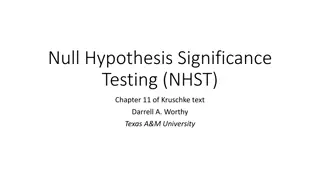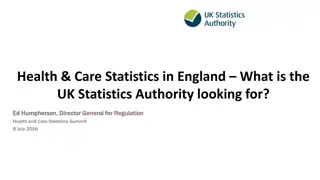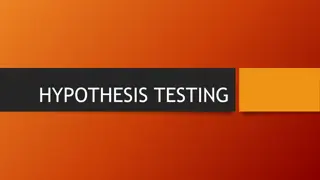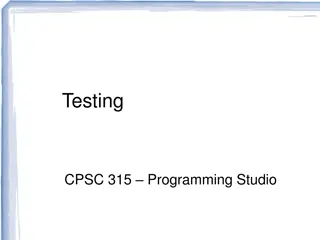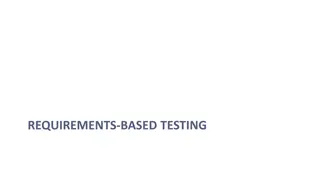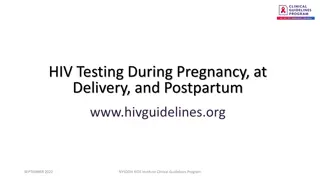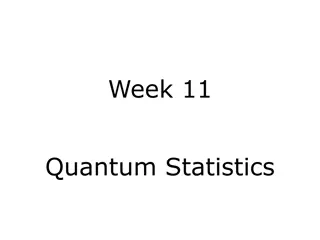Significance Testing in Statistics
Significance testing is a vital concept in statistics used to analyze data and make informed conclusions about population parameters. This lesson delves into the significance test procedure, hypotheses formulation, interpreting P-values, and drawing appropriate conclusions based on statistical evidence. Differentiating between null and alternative hypotheses and understanding the types of alternative hypotheses are key aspects covered in this educational material.
Download Presentation

Please find below an Image/Link to download the presentation.
The content on the website is provided AS IS for your information and personal use only. It may not be sold, licensed, or shared on other websites without obtaining consent from the author.If you encounter any issues during the download, it is possible that the publisher has removed the file from their server.
You are allowed to download the files provided on this website for personal or commercial use, subject to the condition that they are used lawfully. All files are the property of their respective owners.
The content on the website is provided AS IS for your information and personal use only. It may not be sold, licensed, or shared on other websites without obtaining consent from the author.
E N D
Presentation Transcript
Testing a Claim Lesson 8.1 The Idea of a Significance Test Statistics and Probability with Applications, 3rdEdition Starnes & Tabor Starnes & Tabor Statistics and Probability with Applications, 3rd Edition Bedford Freeman Worth Publishers Bedford Freeman Worth Publishers
The Idea of a Significance Test Learning Targets Learning Targets After this lesson, you should be able to: After this lesson, you should be able to: State appropriate hypotheses for a significance test about a population parameter. Interpret a P-value in context. Make an appropriate conclusion for a significance test based on a P-value. Statistics and Probability with Applications, 3rd Edition 2 2
The Idea of a Significance Test Confidence intervals are one of the two most common types of statistical inference. Use a confidence interval when your goal is to estimate a population parameter. The second common type of inference, called a significance test, has a different goal: to test a claim about a parameter. Significance Test A significance test is a formal procedure for using observed data to decide between two competing claims (called hypotheses). The claims are statements about a parameter, like the population proportion p or the population mean . Statistics and Probability with Applications, 3rd Edition 3 3
The Idea of a Significance Test A significance test starts with a careful statement of the claims we want to compare. The claim we seek evidence against is called the null hypothesis, abbreviated H0. The claim we hope or suspect to be true instead of the null hypothesis is called the alternative hypothesis. We abbreviate the alternative hypothesis as Ha. Null Hypothesis H0 , Alternative Hypothesis H a The claim about the population that we weigh evidence against in a statistical test is called the null hypothesis (H0). The claim about the population that we are trying to find evidence for is the alternative hypothesis (H a). Statistics and Probability with Applications, 3rd Edition 4 4
The Idea of a Significance Test The null hypothesis has the form H0: parameter = null value. A one-sided alternative hypothesis has one of the forms H a: parameter < null value or H a: parameter > null value. A two-sided alternative hypothesis has the form H a: parameter = null value. One-sided alternative hypothesis, Two-sided alternative hypothesis The alternative hypothesis is one-sided if it states that a parameter is greater than the null value or if it states that the parameter is less than the null value. The alternative hypothesis is two-sided if it states that the parameter is different from the null value (it could be either greater than or less than). Statistics and Probability with Applications, 3rd Edition 5 5
The Idea of a Significance Test Two cautions about hypotheses: The hypotheses should express the hope or suspicion we have before we see the data. Hypotheses always refer to a population, not to a sample. When performing a significance test, we seek evidence against the null hypothesis. To answer the question, Is the evidence convincing? we have to know the likelihood of observing our sample by chance alone. P-value The P-value of a test is the probability of getting evidence for the alternative hypothesis H a as strong as or stronger than the observed evidence when the null hypothesis H0 is true. Statistics and Probability with Applications, 3rd Edition 6 6
The Idea of a Significance Test The final step in performing a significance test is to draw a conclusion about the competing claims being tested. We make a decision based on the strength of the evidence against the null hypothesis (and in favor of the alternative hypothesis) as measured by the P-value. Small P-values give convincing evidence for Ha because they say that the observed result is unlikely to occur when H0 is true. Large P-values fail to give convincing evidence for Ha because they say that the observed result is likely to occur by chance alone when H0 is true. How to Make a Conclusion in a Significance Test If the P-value is small, reject H0 and conclude that there is convincing evidence for H a (in context). If the P-value is large, fail to reject H0 and conclude that there is not convincing evidence for H a (in context). Statistics and Probability with Applications, 3rd Edition 7 7
LESSON APP 8.1 Do people kiss the right way? According to an article in the San Gabriel Valley Tribune, Most people are kissing the right way. That is, according to a study, the majority of couples prefer to tilt their heads to the right when kissing. In the study, a researcher observed a random sample of 124 kissing couples and found that 83/124 ( = 0.669) of the couples tilted to the right. Do these data provide convincing evidence that more than 50% of kissing couples prefer to tilt their heads to the right? 1. State appropriate hypotheses for performing a significance test. Be sure to define the parameter of interest. The P-value for the test in Question 1 is 0.0001. Interpret the P- value in context. What conclusion would you make? 2. 3. Statistics and Probability with Applications, 3rd Edition 8 8
The Idea of a Significance Test Learning Targets Learning Targets Seatwork/Homework: After this lesson, you should be able to: After this lesson, you should be able to: State appropriate hypotheses for a significance test about a population parameter. Interpret a P-value in context. Make an appropriate conclusion for a significance test based on a P-value. Lesson 8.1 Seatwork/Homework Pg. 505 #1, 2, 4-6, 8-10, & 12 Statistics and Probability with Applications, 3rd Edition 9 9






















